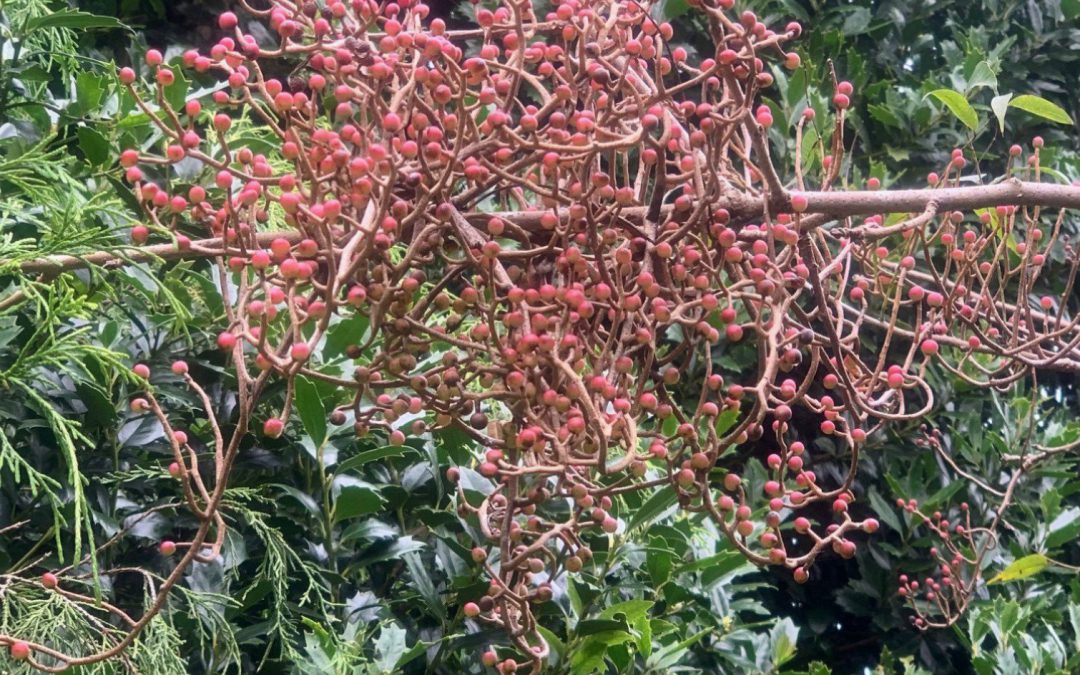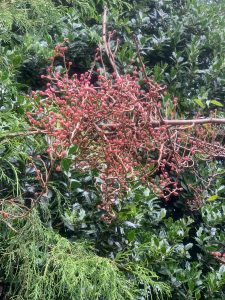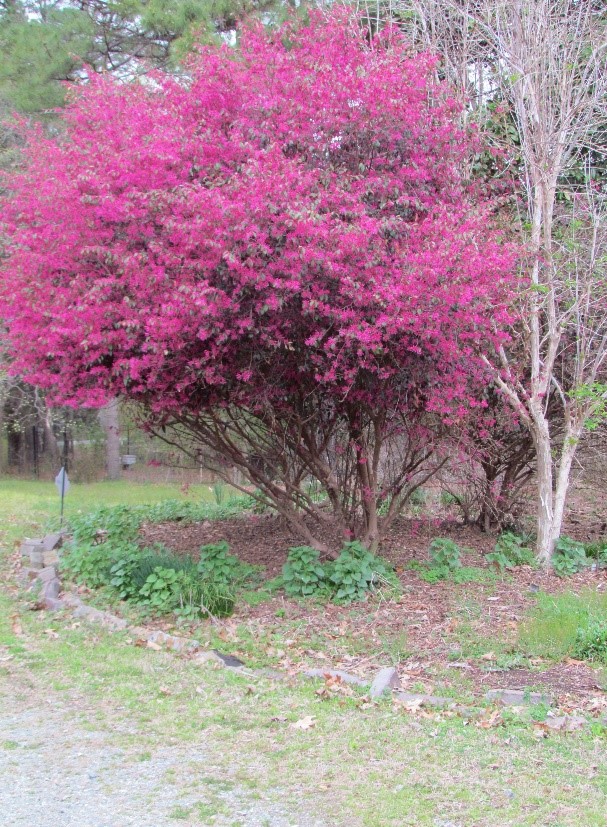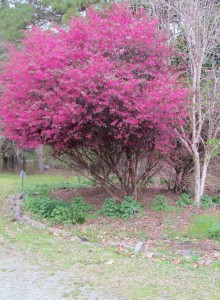
by Beth Bolles | Oct 21, 2020
Many people often request a recommendation for a small tree that will be suitable for their landscape and one to consider is the Chinese Pistache, Pistachia chinensis. Although not a native tree, Chinese Pistache does not have invasive potential so it can make a suitable option for both commercial and residential landscapes.

Berries also offer nice fall color. Photo by Beth Bolles, UF IFAS Extension Escambia County
The best features of Chinese Pistache are the fall color it offers with orange leaves, followed by clusters of salmon berries. It will lose its leaves as days shorten but you can enjoy the textured bark during the winter season. Compound leaves offer interest as well during the spring and summer. Adding some medium to fine textured foliage plants under and around trees will provide a nice landscape display.

Chinese Pistache has been an attractive feature in the Escambia County Demonstration Garden for over 20 years. Photo by Beth Bolles, UF IFAS Extension Escambia County
A positive feature of Chinese Pistache is that once it is established, it is tolerant of drought. Expect trees to be about 25 to 30 feet in height with a 20 to 25 foot spread. Each tree will have it own unique branch structure and some pruning will be required when trees are young to develop strong connections. You may plant as a full sun tree to provide a little dappled shade for your garden or use as an understory tree in partial shade.

by Daniel J. Leonard | Mar 23, 2016
One of the major issues homeowners face in their landscapes is selecting a tree that in maturity will be in scale with the rest of their garden and home. While we have several actual trees that fit the bill, I would like to focus today on thinking outside the box by selecting a larger growing shrub that we can “limb up” into a small tree!

Loropetalum in its tree form
Today’s plant is Loropetalum chinense, also known as Chinese Fringe Flower, a beautiful import related to our native Witchazels (Hammemelis spp.). Some species of Loropetalum can have green foliage and white flowers, but it is generally found in its coveted maroon-foliaged form, which is the subject of this piece. Most cultivars of Loropetalum (with the exception of a few newer ‘dwarf’ cultivars) are large (to 20’ tall and about half as wide) evergreen shrubs that prefer partial shade to full sun. In the early spring, it bursts with wavy, fringe-like red, pink, or white flowers!
In order to “tree-form” the plant, one should gradually begin removing lower lateral branches, crossing or rubbing branches, and any potentially diseased branches, leaving 5-7 main trunks. Eventually, most common cultivars of Loropetalum can easily be pruned to have 4’-5’ of exposed trunk!
Unfortunately, Loropetalum has been both overused and misused as a tightly sheared foundation plant in every landscape imaginable, from gas stations to Aunt Gertie’s rental house. As such, it has gotten a bad reputation as a monster that has to be constantly sheared to keep it in line. This reputation is completely unwarranted if using the shrub as it was meant to be used, as a large specimen shrub or a graceful small-tree! Yet another example of how using the right plant in the right place can change the public’s entire perception of it! Try tree-forming a Loropetalum today and enjoy it for years to come! Happy Gardening!





